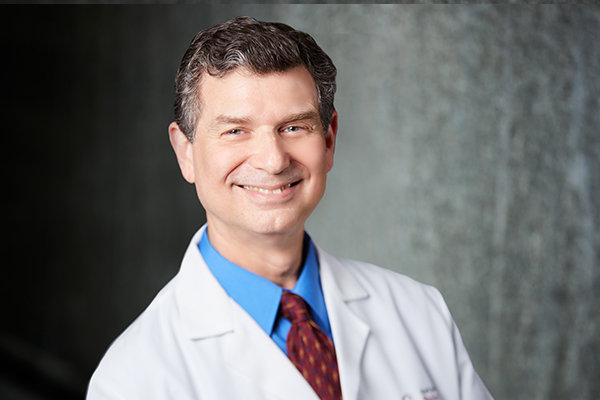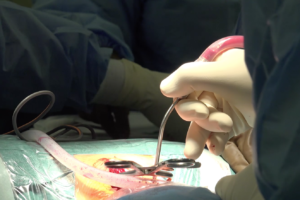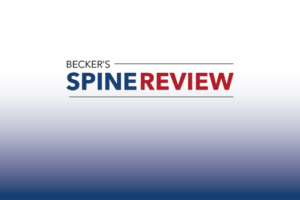
If you’re suffering from back pain or neck pain, you’re not alone. Up to 80% of adults will experience back pain at some point in their lives, and up to 70% will experience neck pain.
The good news is that most patients with back or neck pain do not require surgery. In fact, many of these cases can be treated effectively at home. This is because neck and back injuries are often soft tissue-related, involving muscles and ligaments, and resolve over time without formal medical intervention.
That said, it is always important to seek out an evaluation from a physician if you are experiencing debilitating neck or back pain, pain that persists, pain that radiates to your arm or leg, or pain that is accompanied by tingling or weakness.
Back and Neck Pain At-Home Prevention and Treatment Techniques
While each patient’s needs vary, at-home prevention and treatment techniques may include:
- Engaging in regular exercise and activity
- Focusing on proper ergonomics and posture
- Taking over-the-counter medications
- Reducing new risk factors
Exercise and activity
You’ve probably heard the phrase, “movement is medicine, and sitting is the new smoking.” As a physical medicine and rehabilitation physician with additional board-certification in pain management who has treated thousands of patients, I wholeheartedly agree with that statement.
Be sure to stay active and avoid prolonged sitting, particularly on soft couches, and regularly engage in flexibility and strengthening exercises. These exercises can help prevent back and neck pain and keep it from escalating when it does occur.
Here are a few exercises I often recommend to patients:
Knee to chest
Lie flat on your back, preferably on a carpeted surface or yoga mat, with your knees bent and arms at your side. Bring your right knee to your chest, keeping your left leg on the ground and pressing your lower back into the floor. Hold for 15-30 seconds and then drop your right leg. Repeat with the left knee, and then both knees together. Repeat for 3-5 sets.
Pelvic tilts
Lie flat on your back with your knees bent and arms by your side. Tighten your abdominal muscles and at the same time flatten your lower back against the floor. This should tilt your pelvis and hips towards your chest. Hold the position for 10-15 seconds and then relax. Repeat.
Hamstring stretch
Lie flat on your back with your knees bent and arms by your side. Straighten your right leg and lift up towards the ceiling until you feel a strain in the hamstring at the back of the thigh. Hold the position for 20-30 seconds then relax. Return to your starting position and repeat with your left leg. A more advanced version can also be performed with one leg remaining flat on the ground.
Press up back extension
Lie flat on your stomach, face down and palms down. Your elbows should be bent so that your hands are near your face, shoulder length apart. Push up onto your elbows, lifting your shoulders and chest off the floor while pressing your lower back into the ground. This arches your back, and you might feel some pressure. Hold this position for 10-15 seconds and relax. Repeat. Patients with spinal stenosis should avoid this exercise.
If any of these exercises cause significant pain, consider making an appointment with your doctor for further evaluation.
Proper ergonomics and posture
When I started practicing 30 years ago, I primarily treated neck and back pain that resulted from traumatic injury. Now, most injuries result from the use of technology such as laptops, iPads, Kindles, and cell phones.
How you interact with technology is critical, and posture and ergonomics are key. Pay attention to how you lift things, sit, stand, and perform everyday activities. It is also important to avoid slouching and looking down at phone or computer screens.
Also, take special care when bending forward and twisting, such as when retrieving something from under your sink. This type of downward motion often initiates back or neck pain. In fact, patients rarely hurt their back while reaching above them. The difference is that the first motion compresses the spine, while the overhead movement opens the spine.
Medications
Over-the-counter medications such as acetaminophen, ibuprofen, and naproxen, taken for brief periods, can help ease minor and temporary neck and back pain for some patients.
But these medications aren’t right for everyone. Individuals with underlying medical problems such as cardiac, kidney, liver, or gastrointestinal conditions, should always consult a physician before taking medications.
Reducing risk factors
If you began working from home during the pandemic, your risk for neck and back pain may have increased substantially. That’s because working at home may be causing you to sit at your desk for longer periods.
If you find yourself in this situation, I recommend setting a timer as a reminder to stand up and take a short walk every 30 minutes. You also may want to invest in a sit-stand desk.
Don’t hesitate to seek care when necessary
As I’ve noted several times, it’s very important to seek out a formal evaluation from a physician for certain cases of neck and back pain. While many patients fear a physician consult will lead to surgery, that’s often not the case.
The right physician will consider all treatment options for you, including a more formal exercise, stretching, strengthening regimen; physical therapy; injections; and/or anti-inflammatories.
If surgery is needed, New Jersey Brain and Spine has a wonderful team of neurosurgeons and orthopedic surgeons who will help select the most minimally-invasive procedure appropriate for your situation.
Dr. Peter Schmaus is a leading physical medicine and rehabilitation physician. With over three decades of experience and additional board-certification in pain management, he specializes in the non-surgical treatment of orthopedic problems, including neck, back, shoulder, knee, hip, and elbow pain as well as herniated discs and spinal stenosis. He conservatively treats tendonitis, rotator cuff and meniscus tears, and sports injuries. He performs multiple types of injections, using ultrasound as necessary, as well as electro-diagnostic testing.


